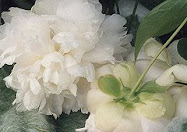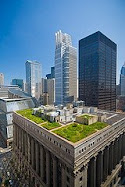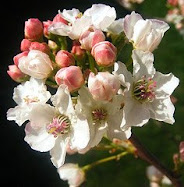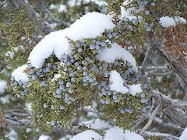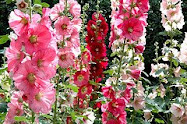 What is a garden? It could be acres of tailored woods and meadows, pathways, ponds, topiary and pergolas. It could be a tapestry of wildflowers in a seam of formerly neglected dirt along a schoolyard fence. It could be herbs and tomatoes, lettuces and broad beans, sunflowers and marigolds in a big city tenement backyard. It could be a haiku of cherry blossom, peony, arched laquer red bridges, swans and raked sand. It could be fat wooden barrels of impatiens, snapdragons, daisies and English ivy standing sentinel at the doors of a firehouse. It could be clay pots of jade, aloe, sempervivums and fountain grass strung shoulder to shoulder along a high rise balcony. It could be teacups of African violets capturing the sunshine on a kitchen windowsill. Or it could be, as in my garden, a small village lot quilted with old-fashioned country garden stalwarts and favorites.
What is a garden? It could be acres of tailored woods and meadows, pathways, ponds, topiary and pergolas. It could be a tapestry of wildflowers in a seam of formerly neglected dirt along a schoolyard fence. It could be herbs and tomatoes, lettuces and broad beans, sunflowers and marigolds in a big city tenement backyard. It could be a haiku of cherry blossom, peony, arched laquer red bridges, swans and raked sand. It could be fat wooden barrels of impatiens, snapdragons, daisies and English ivy standing sentinel at the doors of a firehouse. It could be clay pots of jade, aloe, sempervivums and fountain grass strung shoulder to shoulder along a high rise balcony. It could be teacups of African violets capturing the sunshine on a kitchen windowsill. Or it could be, as in my garden, a small village lot quilted with old-fashioned country garden stalwarts and favorites.We've now come full circle of one whole year in these writings on the garden. Winter has come to call once again, drawing down the window shades on the sun and icing closed the gateway to the garden. This year, watching the big-bellied snow clouds somersault across the sky, I think of tropical islands and the desert Southwest, Hawaii and the Florida Keys. Places where gardening goes on all year long.
The English landscape gardener, Gertrude Jekyll, posited, “A love of gardening is a seed that, once planted, never dies.” Her sentiment is a perfectly accurate summary of my emotional relationship to the fine art of gardening. Every year, as incremental knowledge and skill in the practice of this art are sought after, obtained and heightened; as thrilled acquaintance is made with previously unknown plant species; and as the garden in my keeping grows ever more populated, multicultural and mature; so also grows apace my love of gardening. It's fair to say the fruits of my gardening labor – physical, intellectual, emotional and spiritual – provision me with the greatest happiness and fulfillment of any métier I've turned my hand to since parenthood.
Gardening is as definitively an artistic pursuit as painting, composing music, choreographing dance or writing novels. Earth is the artist gardener's blank tablet, upon which a uniquely individualized creation is constructed, layer after assiduous layer. Like any work of art, the garden can never truly be declared a fait accompli, can always benefit from a smidgen more fine tuning, another wash of color, sowing actions better suited to the setting.
Given the seminal position gardening holds in my heart, mind and way of life, why do I dwell in a northern, wintry clime? Sometimes we choose a place to live, and sometimes a place chooses us. Lake coastal northwestern Michigan chose me. Wooed me, petitioned and cajoled me here, and it does not look fit to let me go anytime soon. We get wed to a particular place because it (or somewhere closely resembling it), was the landscape to our childhood, which we all ache to recapture in some ways; and because the place shelters family, friends, neighbors with whom we want to keep close proximity; and because the physical attributes of the land, the colors and contours, stones and waterways, flora and fauna, quality of light and darkness, act upon us as balm and inspiration, soothe us and stimulate us like nowhere else we've hung our hat.
Hence it is that whenever a gardener finds herself to have, in the fullness of life, put down strong rootstock, be it in city or country, in groves of buildings or of trees, studio apartment or suburban tract or log cabin, in that place of her belonging she will ply her chosen craft and make a garden. The definition of a garden has no fixed size, shape, locale or cultivars. It is not any list of characteristics, however lengthy or broad, but rather is a testament, sworn in seed, soil, moisture and light. Here I am, it states, here shall I abide, find a handful of earth, plant, nurture, believe in tomorrow, and raise up life. A garden is a womb, a faith, and a hope.
